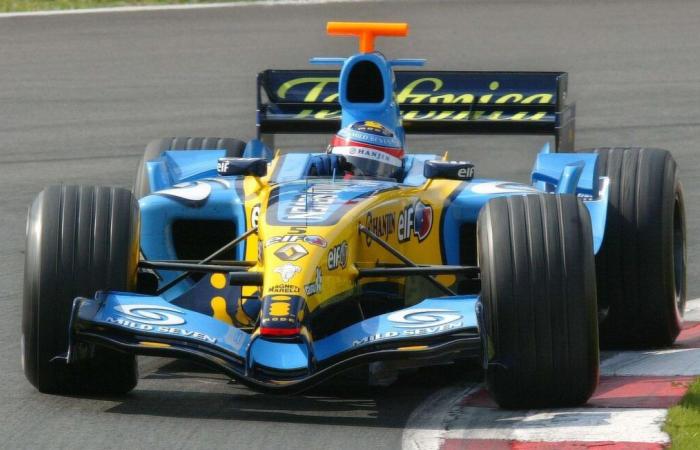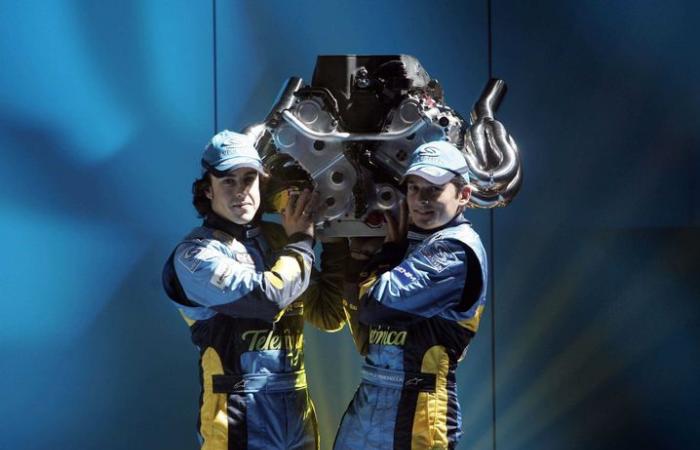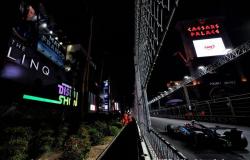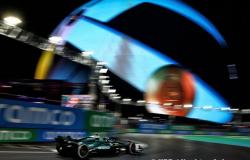A pink Alpine for the last three Grand Prix of the season, including Las Vegas this weekend, after a blue Alpine throughout the year. But above all an Alpine without a Renault engine from 2026. The Alpine Formula 1 team wanted to be the “French Ferrari”, but it will be equipped from 2026 with an engine and a gearbox… Mercedes . What seemed totally improbable became a reality on Tuesday November 12, with the formalization by Alpine of the supply of the engine and gearbox by the German manufacturer from the entry into force of the new regulations, in 2026.
“As part of this multi-year agreement, Mercedes-Benz will supply the BWT Alpine Formula One Team with powertrains for the duration of the new regulatory era, from 2026 to at least 2030. In addition to the power unit, BWT Alpine Formula One Team will also receive Mercedes gearboxes from the 2026 season,” the statement said.
Two years of work thrown in the trash
This news further formalizes the cessation of production of the Renault engine for Formula 1 at the historic Viry-Châtillon site, announced by the CEO of the Renault group, Luca de Meo, on September 30. “It’s heartbreaking. This decision is the result of months and months of observations. It hurts to see them so disappointed with this decision, but unfortunately in my job, I can't think like a fan. And I have to rethink the F1 project, to finally win. So I’m looking for shortcuts to achieve this,” explained the CEO.'Team a few days after this announcement.
In the trash, therefore, the two years of work, the last of which was very intense, on the development of the engine for the 2026 regulations, by the 250 people from the Renault factory assigned to F1. Buying an engine from Mercedes costs 20 million per year, while “keeping such an activity at Renault costs between 200 to 250 million”, according to Luca De Meo.
A very promising engine
Savings, but above all a huge waste for Patrick Gabaud and Clement Gamberoni, two members of the CSE of the Viry-Châtillon factory, to abandon an engine which had already been started for the first time, last June. “He is among the best. We spoke with the other manufacturers and they are not as advanced as us, apart from maybe Mercedes. We had made a paradigm shift in our strategy, with concepts that were a departure from what we were used to doing. And the results were very promising, with an unparalleled level of combustion,” they explain.
Except that with this decision to stop production of the Renault engine, we will never know if this RE26A, the factory name given to the engine of the 2026 regulations, was capable of restoring its letters of nobility to Renault in the history of Formula 1 after the failed turn of the hybrid era in 2014.
Major innovations
Because Renault has been a monument to the premier discipline of motor racing since its beginnings in 1977. The manufacturer has won 12 titles, including two as an engine manufacturer, and ten as an engine manufacturer for Williams, Benetton and Red Bull Racing. . And he is at the origin of some major innovations.
“The introduction of the turbo in 1977 with the Renault-Elf RS01 completely revolutionized the automobile industry,” recalls Patrick Gabaud. Although it was introduced in 1977, it would be necessary to wait until 1979 to see Renault and its “Yellow Tea pot”, as their competitors liked to make fun of it, win its first Grand Prix on the Dijon-Prenois circuit. And turbo technology will gradually impose itself on all teams, with Formula 1 cars able to develop up to 1,500 horsepower (!) during qualifying.
The V8 engine supplied to Red Bull in the early 2010s was as much a feat as a success since it allowed the young winged bull team to dominate Formula 1 for four years. “It was not the most powerful, but the one with the greatest range of use. It was fuel-efficient and the blowing work on the exhausts also helped the aerodynamics of the cars when cornering,” lists engine engineer Clement Gamberoni.
The most impressive V10 of all time?
But the most impressive of all remains the V10 which allowed Renault and Fernando Alonso to win the only two engine team titles in 2005 and 2006. Just hear the reaction of Lewis Hamilton, the driver with the greatest number of victories in Formula 1, when in 2021, he was interrupted in the middle of an interview by the shrill roar of the vintage engine of Fernando's Renault R25 Alonso: “Oh that sound is so good… It’s the best sound I’ve ever heard from a racing car.”
“Normally we use the same engine for two GPs, except there were an odd number of races, so we used a new engine for the Brazilian GP alone. We dropped everything, we put all the performance items to the maximum and it worked. The engine developed more than 22,000 revolutions per minute. When we put the car on the track, all our competitors wondered what was happening,” recall Patrick Gabaud and Clement Gamberoni.
And according to him, the 2026 engine could have produced the same effects. But we will never know because if the development of the RE26A will go all the way in the factory, before the Viry-Châtillon employees are assigned to other projects, it will never equip a Formula 1 for real.







